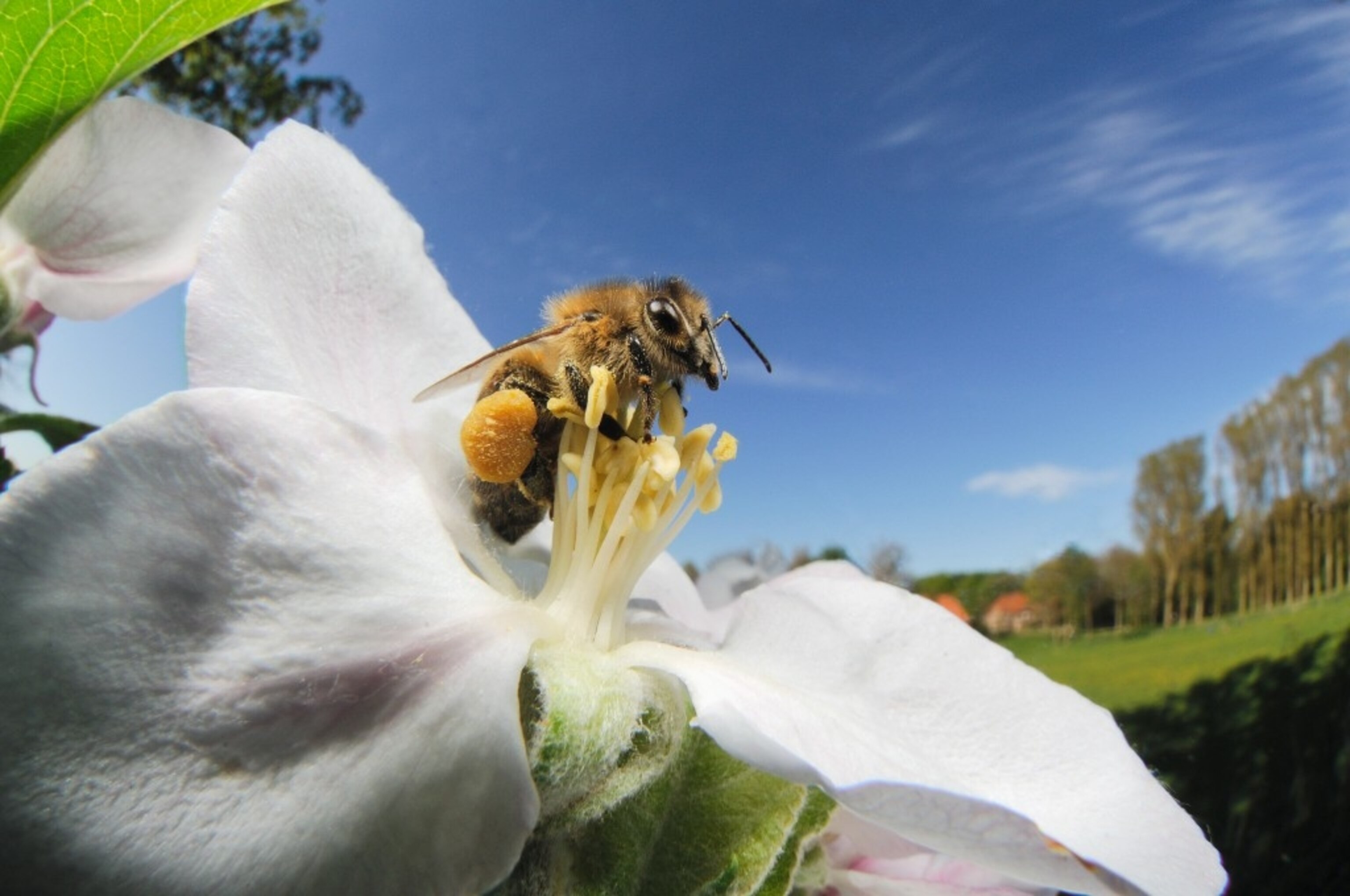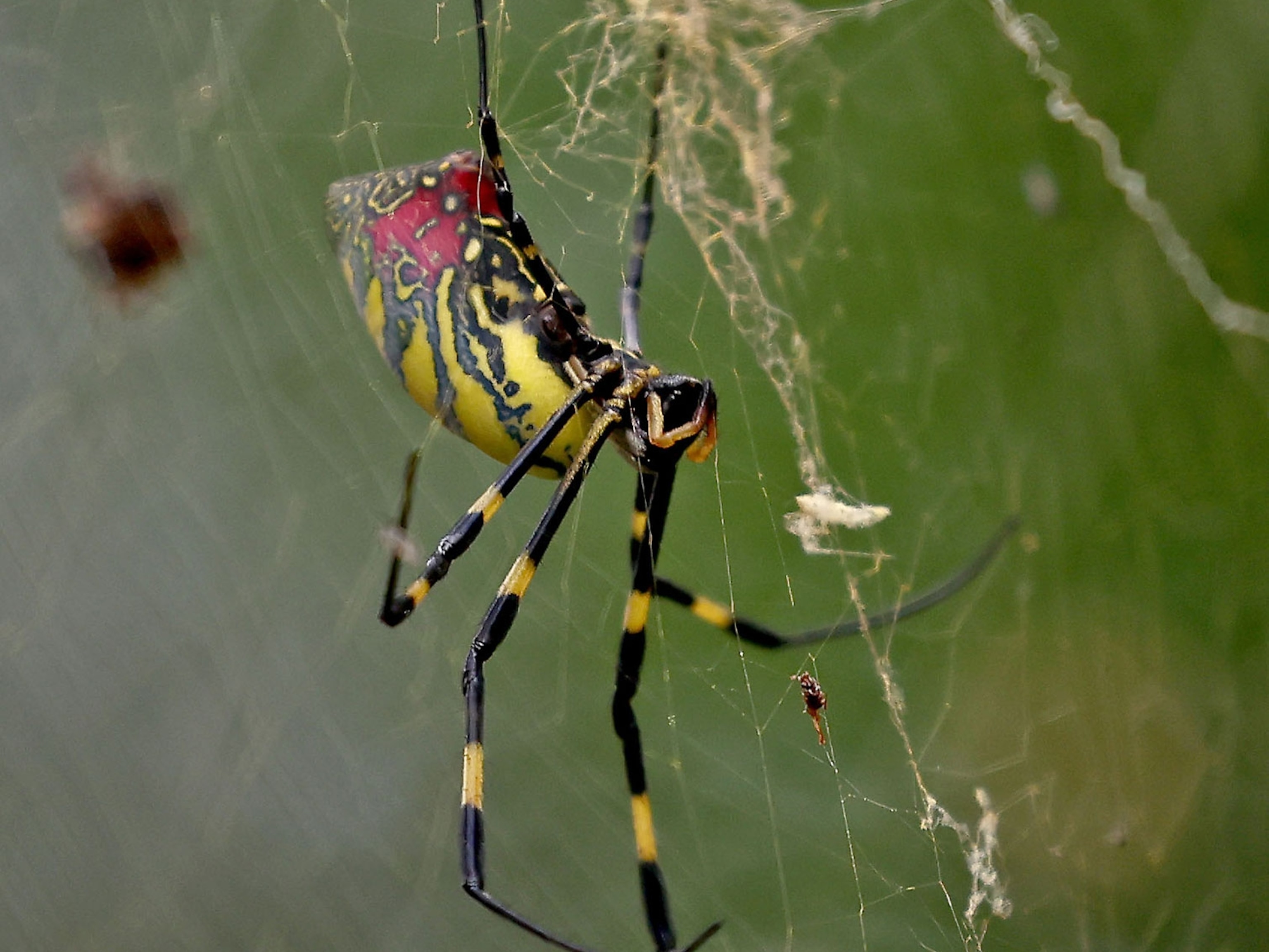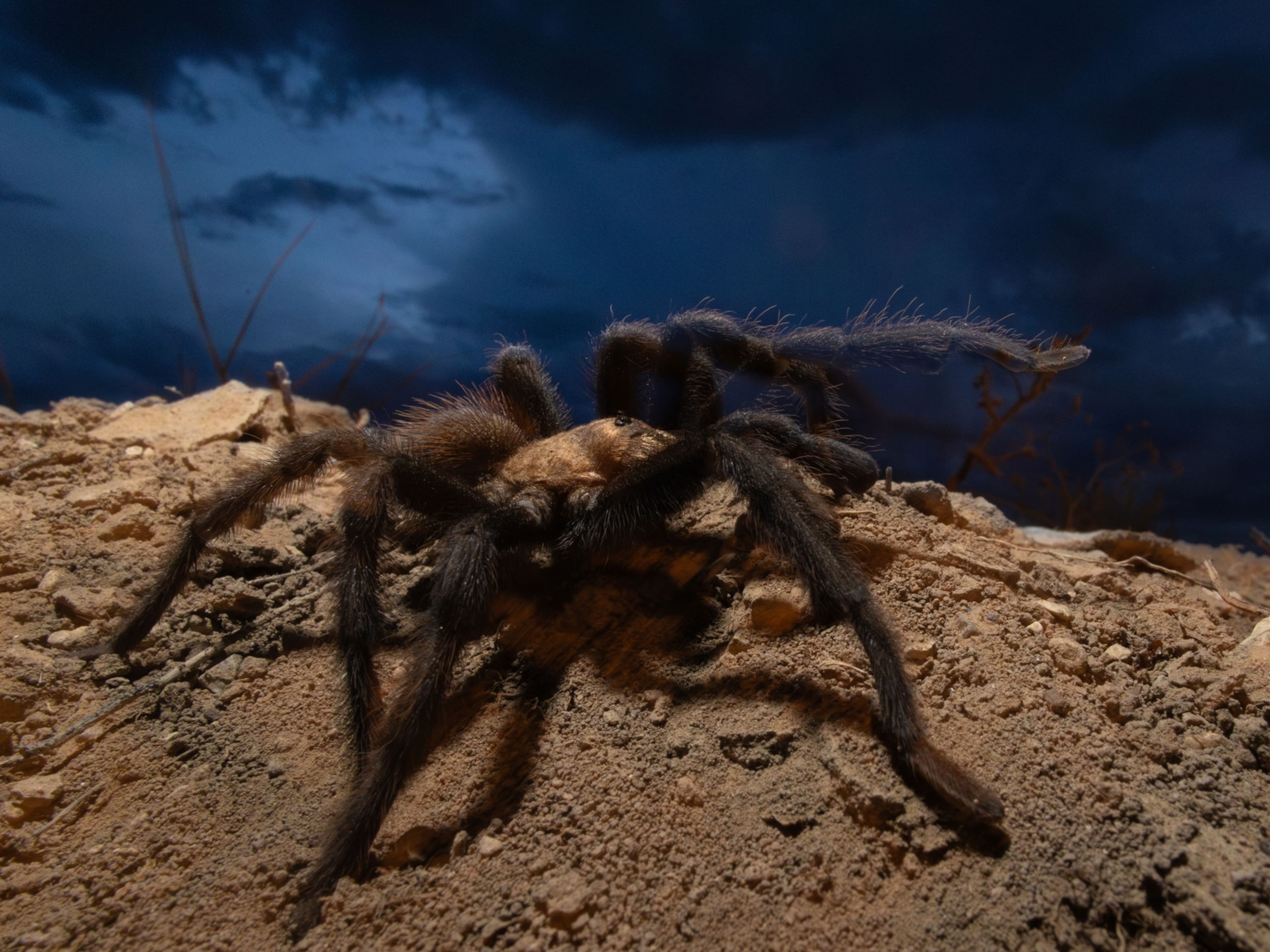
Can Spider Venom Save the Honeybee?
Insecticides can help protect plants, but they're having a dramatic effect on honeybee populations.
Controlling pests is a constant challenge for farmers. Months of hard work can disappear in no time as insects munch their way across a planted field.
Synthetic insecticides can beat back the swarms, but they also affect other creatures. A new study, just published in the Proceedings of the Royal Society B, offers hope for the future—a bio-based poison that zaps only the bad bugs.
The new pesticide, based on the venom of a particular spider, kills common agricultural pests but leaves honeybees unharmed. (See “Honeybees in East Africa Resist Deadly Pathogens.”)
The bee-friendly nature of this pesticide is a big selling point. Honeybees are vital pollinators, but their numbers are declining around the world. There’s still much debate about the causes, and about the phenomenon known as colony collapse disorder (CCD), but conventional pesticides are thought to play a major role in the increased mortality. Toxins known as neonicotinoids have already been banned in the European Union because of their adverse effects on honeybees.
Pesticide Recipe
The new pesticide recipe starts with the venom of an Australian funnel-web spider, Hadronyche versuta.
Spider venom is a good candidate for an eco-friendly insecticide base because it’s created to kill pests in the first place. “Most spiders, when they try to get their prey, they’re targeting other insects,” says Elaine Fitches, a science officer at the Food and Environment Research Agency in the U.K., who co-authored the new study.
The venom contains useful component parts called peptides that differ in their targets and effects.
“The venom of funnel webs has been well studied and contains hundreds of peptides,” explains Pierre Escoubas, president of VenomeTech, a French company that specializes in developing venom-based therapies.
Many of those peptides are toxic to vertebrates, adds Escoubas, who was not involved in this study. “But some specifically target insect nervous systems while being harmless to vertebrates, and are thus good candidates for the development of novel biopesticides.”
To make the new biopesticide, scientists created a “fusion protein,” combining a spider-venom peptide and a kind of protein called lectin from the snowdrop plant.
The venom peptide would normally degrade in the insect’s gut when eaten. But the lectin acts as a carrier that allows the venom to pass from the gut to the central nervous system, where it has its intended lethal effect.
Researchers tested the venom-based pesticide on several common agricultural pests, including potato beetles, aphids, and armyworms. The toxin worked, disrupting nerve transmission and causing paralysis.
Happy Honeybees
The results were quite different when researchers tested the biopesticide on the European honeybee, apis mellifera mellifera. It was harmful to bees only in very high doses. At lower doses, in the range that bees might encounter in the field, it had no effect on survival or on the bee’s memory or ability to learn. (See “U.S. Honeybee Losses Not as Severe This Year.”)
The fact that the venom doesn’t bother bees is a significant discovery. “You’re talking about something that’s going to be pretty much benign,” says Fitches. “It benefits the environment.”
Why bees seem to be largely immune to the biopesticide’s effects may be rooted in genetics.
“Receptors of toxins … can vary slightly between insect groups,” says Escoubas. “Therefore various insect classes may be more or less sensitive to the effect of a given toxin. In this case, bees are apparently not very sensitive.”
The potential of the new pesticide lies in its specificity, say researchers—in its ability to target pests without harming threatened pollinators.
Major Step Forward
“It is important that governments and industry develop pesticides that are as specific to their target pests as possible,” says Geraldine Wright of Newcastle University, another study co-author.
“Our work shows that, depending on the metabolic target, it is possible to make insecticides that do not affect honeybees.” (See: “Intimate Portraits of Bees.”)
Escoubas called the findings “a major step forward,” noting the importance of both the apparently selective nature of the pesticide and the fact that a protein-based pesticide would degrade rapidly and not linger in the environment long-term.
More research is required to assess the safety of the new pesticide—especially how it affects other beneficial insects such as bumblebees and wasps. But if it comes into regular use someday, that could be very bad news for pests and very good news for everyone else.
Follow Stefan Sirucek on Twitter.




